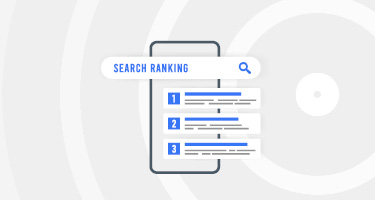For legal practices, converting online visitors into clients is a foundational objective. Achieving this requires proper law firm website search engine optimization and effective landing pages.
Research shows that 43.6% of marketers prioritize lead generation as the main goal when developing landing pages.
This article covers the primary components of high-converting pages to help drive client acquisition.
Key Elements of High-Converting Legal Landing Pages
Building an effective legal landing page requires a strategic approach. These components help turn visitors into potential clients:
Headlines
A brief, attention-grabbing statement that immediately tells visitors what the page is about.
Content
Clear, persuasive writing that speaks directly to potential clients, answering their questions and encouraging action.
Forms
Simple, well-structured fields that allow visitors to provide their information without unnecessary steps.
Calls to Action (CTAs)
Direct prompts that guide visitors toward a specific next step, like booking a consultation or downloading a resource.
Design
A clear, well-organized layout that helps visitors find information quickly and easily.
Mobile Optimization
A website that automatically adapts to different devices, making it easy to use on any phone or tablet.
SEO
Strategies that help the page appear in relevant search results, increasing visibility for potential clients.
Crafting Headlines That Grab Attention
A law firm landing page headline must quickly engage visitors. It is the first point of contact and determines if they will continue reading. Landing pages with both a clear headline and subhead line achieve an average conversion rate of 8.6%, compared to 5.2% for those without, demonstrating the value of offering detailed information.
For example, in personal injury law, a headline like "Dedicated Personal Injury Lawyer Ready to Help You Secure Compensation" directly speaks to the potential client's need and demonstrates expertise.
Writing Effective Content for Legal Audiences
To strengthen law firm website search engine optimization, legal landing page content should prioritize clarity and client understanding. To achieve this, law firm landing pages should:
Use Client-Centered Language
Employ language potential clients understand, avoiding legal jargon. Focus on addressing client problems and providing clear solutions.
Demonstrate Expertise and Credibility
Clearly highlight the firm's qualifications and experience. Including social proof on a landing page, such as customer testimonials, can increase conversions by up to 34%.
Use Case Results Ethically
If referencing past case results, ensure accuracy, provide verifiable detail and comply with bar association guidelines to avoid misleading expectations.
Designing Effective Calls-to-Action
CTAs for legal websites serve as a bridge between visitor interest and client acquisition. They are strategic prompts that guide users toward a specific action by providing clear direction and immediate value. Research shows that personalized CTAs perform 202% better than generic ones.
For example, instead of a standard 'Contact Us' button, it is recommended to use 'Get Your Free Personal Injury Consultation' for visitors exploring personal injury services. By following landing page best practices for law firms, you can create CTAs that are not only compelling but also relevant to your audience.
Better Forms to Encourage Client Inquiries
Effective form design is a key element of website optimization for law firms, ensuring potential clients can submit their information easily. Research shows that shorter forms tend to convert better.
One study found that forms with four questions yield the highest conversions for 30.7% of marketers, while another reported a 10% conversion rate for three-field forms. While the ideal form length may vary, your law firm should prioritize streamlined forms that reduce friction and improve lead generation for better results.
Best Practices for Creating Effective Forms
Effective forms should be clear, easy to complete and strategically positioned. The following guidelines enhance usability and encourage more client inquiries:
Clear Labeling and Instructions
Use simple, direct labels and easy-to-follow instructions to prevent confusion.
Reduce Friction and Simplify Forms
Place forms where they’re easy to find, remove unnecessary fields, keep the process short and position them at the top of the page for better visibility and higher conversions.
Creating Effective Visual Design
To build client confidence and brand awareness, law firms should create a consistent visual experience on their websites. This means using the same colors, fonts and high-quality images, as well as maintaining a well-organized, uncluttered layout that allows visitors to easily find the information they need.
Studies reveal that consistent brand presentation leads to a 10-20% revenue growth for 35% of organizations to experience. Additionally 57% of online users will not recommend a brand that lacks a well-designed website. Following law firm website design tips can help ensure a professional, user-friendly appearance that builds trust with potential clients.
Ensuring Mobile-Friendly Responsiveness
In 2024, mobile devices generated 62.5% of global website traffic. Mobile users now dominate online traffic, making responsive design essential for law firms. Studies show that 53% of potential clients will leave a website that doesn't load within three seconds on their mobile devices. A mobile-optimized landing page loads quickly, displays properly across all devices and converts visitors regardless of screen size.
To assess your landing page's mobile performance regularly test your pages on various devices, track mobile-specific conversion rates and monitor page loading speeds.
SEO Basics for Law Firm Landing Pages
The following practices help improve law firm website search engine optimization:
Strategic Keyword Integration
Use targeted keywords naturally in headlines, subheadings and text without overstuffing. Prioritize location-based terms and practice area phrases that potential clients commonly search for when looking for legal services.
Effective Meta Elements
Create title tags under 60 characters and meta descriptions under 160 characters, including your primary keyword and a clear value proposition. These elements impact click-through rates and are vital to optimizing law firm landing pages.
Structured Content Optimization
Ensure your landing page content is organized with clear heading tags, such as H1, H2 and H3. This approach helps visitors easily navigate the page and enables search engines to recognize the importance and flow of the content.
Optimizing Images for Accessibility
Every image on your landing page should include detailed alt text. This enhances accessibility and ensures search engines can properly associate the images with your law firm’s services, improving your SEO.
Best Law Firm Landing Pages: Effective Design for SEO and Conversions
From clear messaging and strong CTAs to mobile-friendly design and SEO best practices, every element plays a role in turning visitors into clients. Building effective landing pages is not a one-and-done effort, it requires continuous improvement and strategic adjustments.
For law firms looking for expert support, Best Lawyers offers professional website design and development services tailored to legal professionals, including law firm website search engine optimization. Build a website that attracts clients and drives results for your firm.



























